Jamie Marchant's Blog, page 17
May 16, 2017
Yves Fey Kills Her Darlings
Killing Your Darlings by Yves Fey
Killing your darlings is a phrase you see used to recommend you kill off your favorite bits of prose. The idea is that if they are too precious, too treasured, it will show and distract from your story rather than adding to it, or that they may be doted on by you for good reason, but add nothing. For darlings of this nature, I can only hope you don’t have to slay them because they are perfectly attuned both to their place in your story and to your style. One would not want Raymond Chandler to remove the tarantula from the piece of angel food cake.
I’m talking about killing even more precious darlings, your favorite characters. I’m talking about it for a couple of reasons. First because I’ll be killing off a character I like quite a bit in my next book, and because it’s rather painful, I’m looking at the map of the moment for my series, and wondering if I need do it again. Need in my case because my series is quite dark, and if I guard my loved ones too closely, it is likely to lose reality for the reader. I have about five books planned in all, with possibilities to branch out beyond that. The number is small enough that I may only have to sacrifice the one darling. But if I were writing a longer series, I believe something dire would have to happen to someone of import.
The second reason plays into and off of the first, as I’m about two thirds of the way through Elizabeth George’s latest mystery, Just One Evil Act, and things are looking very dire indeed for a couple of favorites, and if she carries through with the darkest possibilities, the repercussions will ripple outward to yet more beloved characters. And, because she has been ruthless in the past, I know these darlings are not safe. Perhaps they will not die. Perhaps they will not be ruined. But perhaps they will, and I’m filled with dread and fascination about where she will take the story. The emotional risk is far more riveting than any car chase or barroom brawl could be.
In one of my all-time favorite historical series, The Lymond Chronicles, Dorothy Dunnett was also absolute ruthless in killing off favorite characters. I was often devastated at the loss, but I admired and respected her as a writer for doing it because it gave the books more emotional power. Blake’s 7, a very dark British Sci Fi TV series leaps from dramatic space opera to superb and stunning tragedy in its last episode as the darlings fall dead. I think about amazing show too, though I know I don’t want a tragic outcome for my series.
If you are writing genre romance, or writing a cozy, you won’t want a tragic or unhappy outcome. You probably won’t want to kill off a sympathetic character. Your reader wants to remain safe from emotional bruising. But even a small step into the darker realms of those or related genres, romantic suspense, say, or any mystery series beyond the light classic, should lead the writer to question if killing off a darling might give greater power and reality to their book.
Floats the Dark Shadow
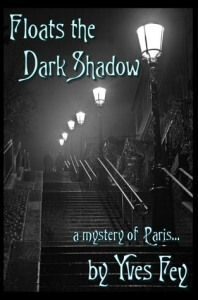 FLOATS THE DARK SHADOW is a literary mystery set in the dynamic and decadent world of Belle Époque Paris. Aspiring artist Theodora Faraday and Detective Michel Devaux clash in their search for a mysterious killer who has already claimed too many children. Classic detection and occult revelation lead Michel and Theo through the dark underbelly of Paris. Following the maze of clues they discover the murderer believes he is the reincarnation of the most evil serial killer in the history of France—Gilles de Rais. Whether deranged mind or demonic passion incite him, the killer must be found before he strikes again.
FLOATS THE DARK SHADOW is a literary mystery set in the dynamic and decadent world of Belle Époque Paris. Aspiring artist Theodora Faraday and Detective Michel Devaux clash in their search for a mysterious killer who has already claimed too many children. Classic detection and occult revelation lead Michel and Theo through the dark underbelly of Paris. Following the maze of clues they discover the murderer believes he is the reincarnation of the most evil serial killer in the history of France—Gilles de Rais. Whether deranged mind or demonic passion incite him, the killer must be found before he strikes again.
Floats the Dark Shadow is Yves Fey’s first historical mystery, set in the dynamic and decadent world of Belle Époque Paris. It won several 2013 Indie awards–a Silver IPPY in the Best Mystery category, a Finalist Award in the ForeWord Book of the Year Awards in mystery, and it was one of four Finalists in both History and Mystery in the Next Generation Indie Awards.
It’s available in hardback, paperback, Kindle, and now as an audio book.
Previously Yves wrote four historical romances set in the Italian Renaissance, Medieval England, and Elizabethan England. She will soon be republishing these under her own name of Gayle Feyrer.
About the Author
 Yves has an MFA in Creative Writing from the University of Oregon, and a BA in Pictorial Arts from UCLA. She has read, written, and created art from childhood. A chocolate connoisseur, she’s won prizes for her desserts. Her current fascination is creating perfumes. She’s traveled to many countries in Europe and lived for two years in Indonesia. She currently lives in the San Francisco area with her husband Richard and three cats, Marlowe the Investigator, and the Flying Bronte Sisters.
Yves has an MFA in Creative Writing from the University of Oregon, and a BA in Pictorial Arts from UCLA. She has read, written, and created art from childhood. A chocolate connoisseur, she’s won prizes for her desserts. Her current fascination is creating perfumes. She’s traveled to many countries in Europe and lived for two years in Indonesia. She currently lives in the San Francisco area with her husband Richard and three cats, Marlowe the Investigator, and the Flying Bronte Sisters.
George R. R. Martin is quite famous for doing this. How do you feel when your favorite character dies?
May 15, 2017
Winter Solstice in Korthlundia
 Being about half a Celt (Irish, Scottish, and Welsh ancestry), Celtic culture has always drawn me, and in my Kronciles of Korthlundia series, I looked to ancient Celtic traditions for inspiration. Last week I discussed how Litha, the summer solstice, is celebrated in Korthlundia. Today I bring the winter solstice to life. Winter Solstice is the shortest day or the longest night of the year and has special significance in Celtic and most pagan cultures. It is the origin of Christmas. The Bible gives no indication of when Christ was born, except a ruler would hardly call for a census in the middle of winter. Early Christian leaders timed Christmas when they did because they couldn’t get people to stop celebrating Solstice, so they co-opted it.
Being about half a Celt (Irish, Scottish, and Welsh ancestry), Celtic culture has always drawn me, and in my Kronciles of Korthlundia series, I looked to ancient Celtic traditions for inspiration. Last week I discussed how Litha, the summer solstice, is celebrated in Korthlundia. Today I bring the winter solstice to life. Winter Solstice is the shortest day or the longest night of the year and has special significance in Celtic and most pagan cultures. It is the origin of Christmas. The Bible gives no indication of when Christ was born, except a ruler would hardly call for a census in the middle of winter. Early Christian leaders timed Christmas when they did because they couldn’t get people to stop celebrating Solstice, so they co-opted it.

Solstice is also deeply important in Korthlundia. It is the crown princess Samantha’s favorite holiday and is featured prominently in The Goddess’s Choice. At court on Solstice morning, the nobles parade through town giving presents to children who line the road way. Samantha loves this part of the holiday. The villain Argblutal is able to impress her with his generosity on Solstice, so she chooses him to lead the men in the Solstice, a clear sign of her favor that is the next thing to announcing a betrothal. At night the court gathers in the courtyard where a huge pile of wood awaits the light of the torch. The priestess (or priest) speaks the words of the Solstice blessing, “Oh mighty Sulis, we dedicate this night and this dance to you. Let our fires and our energy feed the sun and bring it back with the strength of summer.” Then Samantha lights the wood with a torch and begins the dance around the bonfire alone.

The other members of the court gradually join in until all dance with wild energy that differs from the traditional court dance. The energy of the dancers is said to feed the ritual. Also, “the mingling of a man and a woman on Solstice night was said to be pleasing to Sulis: the energy produced by the mating encouraged the sun’s return.”
The commoners celebrate in a similar manner with bonfire, dancing, and sex.
What is your favorite holiday tradition?
May 12, 2017
R. J. Leahy and the Fine Art of Comedy
This week my guest is R.J. Leahy, author of the hilariously funny mystery, Fat Chance. He writes on how to write comedy. I’d listen to him because his book proves he knows how what he’s talking about.
“Dying is easy. Comedy is hard.”
 It’s an old acting cliché, but it could just as easily describe the difficulty in writing humor into fiction. It’s easy enough to make people cry. We’re all saddened by the same things: heartache, illness, death. But humor is strikingly individualistic. What’s funny to one person may not be to another (flipping through the channels one day, I happened upon a Three Stooges short that soon had me laughing out loud. This earned a pained expression from my wife, one that could best be described as, pity).
It’s an old acting cliché, but it could just as easily describe the difficulty in writing humor into fiction. It’s easy enough to make people cry. We’re all saddened by the same things: heartache, illness, death. But humor is strikingly individualistic. What’s funny to one person may not be to another (flipping through the channels one day, I happened upon a Three Stooges short that soon had me laughing out loud. This earned a pained expression from my wife, one that could best be described as, pity).
And unlike the visual comic who has other tools available: facial expressions, pregnant pauses, and most importantly, other audience members to help push the comedy along (ever notice how much more easily you laugh when everyone around you is laughing? Hence the invention of the laugh track), for or better or worse, we have only the written word to get our readers to smile.
But as difficult as humor is to get right, it is a tool every writer needs in his box. Even the bleakest novel can benefit from a bit of levity, if for no other reason than to give the reader a break from the intensity. Like everything else in writing, an ear for humor is developed from experience and practice, but you may find the task easier, if you follow a few simple rules.
1.) If your character cries/laughs, your reader doesn’t have to.
Dialogue should be funny to the reader, not the characters. The characters play it straight. Only we, the readers, should catch the joke.
“That’s him, that’s the one. He hit me, Capt’n.” Quig touched the growing lump on his head. “And hard, too.”
The Captain held up his hand. “How many fingers do you see?”
Quig looked down, kicking at the grass. “Aw Captain, you know I’m no good at me numbers.”
“Aye. Just checking. Many a time I’ve seen a blow like that shake loose a few extra smarts in a fellow. Don’t appear it did in your case. Pity.”
Having a character laugh at something obvious is a classic case of, “hanging a lantern”—an annoyingly unsubtle way to point out to the reader that this was meant to be funny.
.
2.) Like perfume, humor should be discovered, not announced.
Tom: I can’t believe we avoided stepping in puddles for six blocks, just to have a truck splash water all over us!
Mike: I know. It’s totally ridiculous!
Talk about hanging a lantern. Never point out the irony or incongruity of a situation. Readers should be able to figure it out themselves. If not, you’ve missed something.
3.) Don’t give us a stand-up routine. Humor flows from the character’s interactions within the novel.
Too often, writers try to insert jokes into their prose. This seldom works. Humor should be a natural outflow of the character’s personality. Is he sardonic, cheerful, introverted, stoic? The type of humorous thoughts, actions and dialogue you attribute to him should be consistent with his personality. That doesn’t mean he can’t step out of his comfort zone from time to time, but be true to the nature you’ve given him.
4.) Don’t forget your narrator.
Unconventional similes and metaphors; irony and exaggeration; they can all be used by the narrator to add humor to a piece, either subtle or broad. Hitchhikers Guide; Catcher in the Rye; Even Cowgirls get the Blues, are only a few of the works that use the narrator masterfully to convey humor and wit.
Which brings us to the final piece of advice: Read. Find those books that make you laugh and study them.
May 11, 2017
The Bow of Hart Saga Book Tour
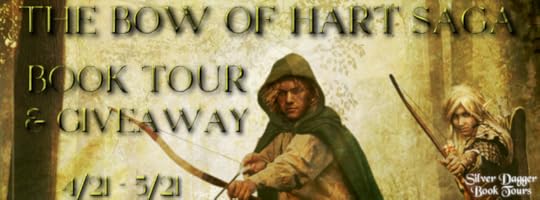
Hello and thanks for visiting today on the blog tour for The Bow of Destiny and An Arrow Against the Wind which are the first two editions of The Bow of Hart Saga.
One the more frequent comments I receive concerns the covers of both books. I’m very pleased with these covers and I’m often asked if I created them myself to which I answer that I did not. That distinction goes to my cover artist, Christopher Rawlins out of the UK, from whom I commissioned the covers.
Many self-publishing authors rely on a service to create a mock-up of a stock photo since their books are set in the real-world. However, science fiction and fantasy books often require more than this kind of cover. Fantasy readers especially like to see original artwork since the books in this genre are often in alternate worlds. As such, original artwork is a premium on which I chose to spend money.
I’m often asked how to choose an artist by other authors and my answer is, “I don’t know.” I found my artist quite by chance based on the image I needed. Since the series is based on archery, I knew I needed a cover with an archer. I happened to find one such image entitled, “Robin of Loxley”, on the internet. It’s a very good rendering of Robin Hood by Christopher Rawlins and it immediately caught my attention as something like what I needed for my cover.
I contacted Christopher and asked about doing a cover based on that picture of Robin Hood and he agreed to take on the project. I sent Christopher some descriptions and ideas and he nailed it on the first try. From there we made a few minor additions and changes to end up with the cover of the Bow of Destiny.
For An Arrow Against the Wind, I went back to Christopher with a few ideas and more characters to add. Christopher then let me know which idea fit best based on the other cover and sent me a mock-up. There were several changes needed to the characters but the basic image was spot on, especially with all the fore-ground and background details. It’s a different setting than the first book but just as eye-catching.
I’m extremely pleased and thankful to be working with such a good artist as Christopher Rawlins. He’s even designed my print cover for The Bow of Destiny which I hope to use in the coming months as I look to release a print version of the series. I still need a print cover for An Arrow Against the Wind but that isn’t a major issue. However, over the next few months, I’ll need to come up with ideas for the last book of the series, The White Arrow, and I’ll be working with Christopher again when the time comes.
Thanks for visiting on this stop of the tour and for your interest in The Bow of Hart Saga books, The Bow of Destiny and An Arrow Against the Wind. Please see the buy links or my contact links for more information about the books. Have any thoughts on fantasy cover art? Leave your thoughts in the comments section and I’ll reply.

The Bow of Destiny
The Bow of Hart Saga: Book 1
by P.H. Solomon
Genre: Epic Fantasy

Haunted by his past. Hunted in the present. Uncertain what is real.
Athson has seen things that aren’t there and suffered fits since being
tragically orphaned as a child at the hands of trolls and Corgren the
wizard. When a strange will mentioning a mysterious bow comes into
his possession, he’s not sure it’s real. But the trolls that soon
pursue him are all too real and dangerous. And what’s worse, these
raiders serve Corgren and his master, the hidden dragon, Magdronu,
who are responsible for the destruction of his childhood home. Athson
is drawn into a quest for the concealed Bow of Hart by the mystic
Withling, Hastra, but Athson isn’t always sure what’s real and who
his enemies are. With Corgren and Magdronu involved, Athson must face
not only frequent danger but his grasp on reality and the reasons
behind his tragic past.
Amazon – Kindle | Barnes & Noble | Kobo | iBooks | Smashwords
Free Prequel short stories to The Bow of Hart Saga:
Trading Knives – Kobo , iBooks & Barnes & Noble , Smashwords and on Amazon
What Is Needed – Barnes & Noble , Kobo , iBooks, Smashwords & Amazon
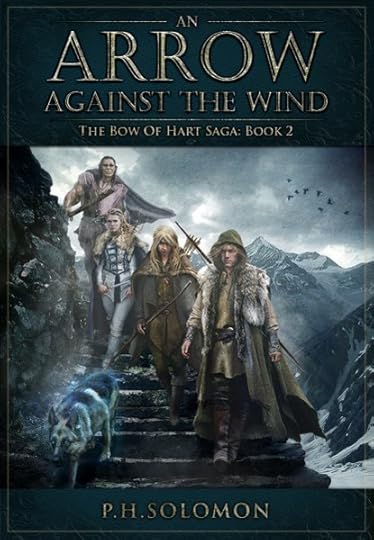
An Arrow Against the Wall
The Bow of Hart Saga Book 2

Haunted by his past. Hunted in the present. Buffeted like an arrow in the wind.
The hunt for the Bow of Hart continues for Athson and his companions.
They have escaped the clutches of Magdronu and Corgren, but they are
still pursued. In need of answers to deep mysteries revealed in
Chokkra, Athson must gain possession of the mythic bow to face both
his enemies and his tragic past. But Magdronu’s reach stretches among
Athson’s companions, endangering Limbreth and even Hastra in schemes
to entrap them all. With each turn of the search for the Bow of Hart,
long hidden secrets surface that threaten to destroy Athson. Will he
falter like an arrow against the wind?
Releases April 30th!!
Amazon – Kindle | Barnes & Noble | Kobo | iBooks | Smashwords


P. H. Solomon lives in the greater Birmingham, AL area where he strongly
dislikes yard work and sanding the deck rail. However, he performs
these duties to maintain a nice home for his loved ones as well as
the family’s German Shepherds. In his spare time, P. H. rides herd
as a Computer Whisperer on large computers called servers (harmonica
not required). Additionally, he enjoys reading, running, most sports
and fantasy football. Having a degree in Anthropology, he also has a
wide array of more “serious” interests in addition to working
regularly to hone his writing. The Bow of Destiny is his first
novel-length title with more soon to come.
Twitter | Facebook | Goodreads | Website | Pinterest | Google + | Wattpad |
Amazon Author

a Rafflecopter giveaway
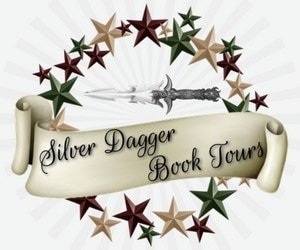
May 10, 2017
Guest Author, Daniel Pertierra
 Meet my fellow Black Rose Writing Author sporting his cool chain mail.
Meet my fellow Black Rose Writing Author sporting his cool chain mail.Daniel Pertierra was born and raised in Upstate New York, graduating with a Fine Arts and Creative Studies degree from Sage College of Albany. His cats and the fairies living in his tomato garden keep him company, and his interest in things fantastic and historical led to the beginning of his writing career.
Interview
Tell us a little about yourself?
I’ve been telling stories for about as long as I can remember, but it’s only in recent years that I’ve seriously worked on original stories. My previous experiences came from taking part in forum-based roleplaying, fan fiction stories (if you ever read one of mine back in the day, you have my sincere apologies), and tabletop RPGs where I most often acted as the Game Master. Working in those fields for so long… well, eventually, you start telling yourself, “I think that I can make a book about this.”
And I did.
A lot of ideas that I’d come up with over the years got recycled and mixed together, and now I’m working on novels and making a career out of this. Everything that I did before now has been practice, and I like to think that I’ve improved tremendously in the process. Now that I’ve gotten published, it feels like a dream come true: success is possible, and it’s emboldening.
Tell us something about how you write? i.e. are you a plotter or a pantser? Do you have any weird or necessary writing habits or rituals?
I am definitely a plotter. Before I write anything, I make an outline for the entire book: each chapter gets its own bullet point that contains everything that has to happen from full scenes to important plot points to specific lines of dialogue. I generally stay close to the outline, but I’ve been known to diverge and make alterations as I go. Sometimes, what I thought was going to be a short chapter mushrooms out into a monster, and I have to split it into two chapters, or I find that something’s lacking and I insert another chapter after the fact. Other times, the characters surprise me and change the direction of the story. (Jamie’s note: those pesky characters often have minds of their own.)
Starting out, though, I need that structure: I find it a lot easier to modify a story after I started than I do to write in the first place. My outlines are essential to keeping me headed forward, and they reduce the chance of something important (like Bob handing Clark the sword needed to slay the evil overlord) getting left out.
Could you tell us a bit about your most recent book?
One of the things that I’ve always wondered, reading a lot of books, is who a 1st Person Narrator is talking to. Sometimes, it’s explained as a series of journal entries (like Dracula, or much of Lovecraft), but it’s often unexplained. I decided early on to address the question and make the narrator an actual character in the story, and to give him a significant role: this is how Odin, the king of the Norse gods, became my viewpoint character. This gave the story a unique feel, and it’s one that I liked playing with. As for that story…
It’s fantasy, and you can see that in the trolls assaulting kingdoms and the dragons stomping through villages in search of gold. In a setting where the hero is an 8-foot-tall, heavily-armed woman and all earthquakes are caused by a thrashing god deep underground, it’s hard not to indulge in the outstanding story elements. However, I did what I could to balance it out with reality. “The Dragonslaying Maiden” takes place in a real time and place (Scandinavia, around the 7th century), and I wanted to reflect that in how the people act and look. Despite having thousands of Norsemen running around fighting, they use tactics and garb that historians ascribe to them. You won’t find many horned helmets, ladies don’t go to battle in metal bikinis, and the weapon of the day is the humble spear. If you walk away from the book both entertained and educated, then I’ve done my job well.
What gives you inspiration for your book?
Two things really came together for The Dragonslaying Maiden: Dungeons & Dragons and historical research.
The character of Dana has her origin in a game of Dungeons & Dragons. She began as my half-giant warrior who wanted to do good. Unfortunately, the party was filled with wandering murder-hobos (otherwise known as heroes) with dubious morals and ethics. The dynamics of the group were pretty unhealthy, she was repeatedly backstabbed by her allies, and tempers flared in-character and out. I eventually had to retire her because she didn’t mesh well with the rest of the group, but I realized that her story had potential. I made a number of changes to make the events of the game suitable as a novel, and Dana the Strong, Dragonslayer of Frost’s End, was born.
In the middle of the conversion process, I realized that I’d drawn on Norse mythology a lot. That revelation gave me a purpose and some direction, and I decided to switch the setting from the faraway and nebulous lands of fairy tales to something closer to reality. I pulled out several books on Norse culture, myth, and history and did what I could to ground the story in facts. I found out how the Scandinavians made their clothes and buildings, how their legal system worked, what their warfare really looked like… the whole works. Rather than throw some terminology over a sword-and-sorcery novel like a Viking tablecloth, the setting demanded changes to the very substance of the story. This wasn’t an inconvenience: it gave me tools to play with. Subplots and dynamics grew like flowers in the fertile earth of history. I honestly think that the story is better for it now and certainly a good deal longer!
If you could have dinner (and dessert) with any fictional character who would it be and why?
The Ghost of Christmas Yet to Come from Charles Dickens’s A Christmas Carol. It doesn’t say a word, and it’s both ominous and obvious as the Grim Reaper, but it’s possibly the kindest figure in English literature. It never mocks, and it does everything in its power to force you into changing your life for the better. As inscrutable and merciless as it may be, the Ghost has your best interests at heart and performs its thankless task every time you open the book. I think that this humble admirer can afford to pay for its dinner (deep dish pizza, for what it matters) and dessert (a nice cannoli). Maybe it would even open up and say a few things about life.
What is your favorite writing tip or quote?
Start at the beginning, and work straight through to the end. When I was younger, I made the mistake of writing all of the “interesting” scenes first and leaving the “boring” parts for later. I didn’t want to write about Bob comforting Alice as she had her nervous breakdown, nor did I want to describe the part in Chapter 2 where Bob went out grocery shopping and stumbled upon the character who’d be revealed as the villain in Chapter 14: I wanted to write the fight scene where a changeling went on a rampage! This inevitably meant that I had no motivation to go back and write those boring scenes, as I’d saved what I thought was the worst for last… what an incentive, huh? Writing from the beginning solves two problems.
The first is that it forces you to develop those “boring” scenes, and you give yourself something exciting to look forward to later on. The awesome showcase action scenes that have been in your head for all this time are your reward for getting through the slow parts filled with exposition. When you’re disciplined like that, you can get through the most tedious chapters.
The second is that far from being boring, the slow parts are where all of the real developments emerge: characters come alive and change into new people. The person who you thought was going to be the villain turns out to have a sympathetic backstory that turns the story on its head. An entire subplot can come out of an offhanded reference that a character makes over dinner conversation. You can completely change the outcome of the story based on these revelations, and you may have to rewrite whole chapters if you skipped ahead and only made those developments afterward.
Tell us a little about your plans for the future. Do you have any other books in the works?
I have stories in mind for multiple genres, but my immediate plan is to work on an urban fantasy/horror series that occasionally crosses over with high fantasy. The protagonist and general plot has been in my head for thirteen years, and I’ve slowly expanded the setting and details ever since. Some of the figures were protagonists of their own stories, and some were random background characters in yet others. One was even a major antagonist in a weekly Pathfinder RPG that I’m currently running. The settings and concepts accompanying those characters filtered back and, little by little, built up what’s possibly my oldest serious idea for a novel into something worth telling.
The story is that of a young girl named Nicole, who was orphaned early on and whose origin nobody can track down. However, she’s the only person on Earth who can see Death – a dark and silent skeleton holding a grim lantern – performing his work and taking away the souls of the departed. She originally thought that he was an imaginary friend and, later, a figment of her imagination. However, when Death starts impacting Nicole’s life in various ways, she realizes that he’s indeed real, and she opens up to the other supernatural truths hiding under her nose after all these years. With fairies, werewolves, magical mirrors, medieval warfare and modern life accompanying her from childhood to adulthood, the stage is set for Nicole to grow into a sorceress and major player in the world of magic. All of this is told from Death’s vantage point, which offers what’s undoubtedly an interesting vantage point on Life in general and Nicole’s life in particular.
Where can we find you online?
Blog: http://dcpertierra.tumblr.com/
Facebook: https://www.facebook.com/DCPertierra/
Amazon: https://www.amazon.com/Dragonslaying-Maiden-Daniel-Pertierra/dp/1612968252/
Barnes & Noble: http://www.barnesandnoble.com/w/the-dragonslaying-maiden-daniel-pertierra/1125796753
The Dragon Slaying Maiden
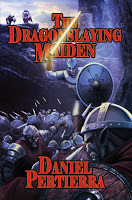 When the Norse god Odin looks over his hall and sees an ancient sword, he’s stunned to learn that no-one remembers the giantess who wielded it so long ago. Read on as Odin, compelled by an ancient memory, recounts the violent tale of Dana the Strong, a little girl who outgrew home in a big way and shaped the course of history. Journey back to the mythological past of Scandinavia, where swords, armies, magic, and monsters still held sway. This is the home of the Dragonslaying Maiden, who overcame betrayal and prejudice in an age when monsters still roamed the Earth.
When the Norse god Odin looks over his hall and sees an ancient sword, he’s stunned to learn that no-one remembers the giantess who wielded it so long ago. Read on as Odin, compelled by an ancient memory, recounts the violent tale of Dana the Strong, a little girl who outgrew home in a big way and shaped the course of history. Journey back to the mythological past of Scandinavia, where swords, armies, magic, and monsters still held sway. This is the home of the Dragonslaying Maiden, who overcame betrayal and prejudice in an age when monsters still roamed the Earth.
Excerpt
. . . Yet you don’t remember the warrior who held evil at bay in Europe’s darkest era! Unthinkable! How can a tale like that die so meekly that only a small number of the dead even remember it? Worse, how can I have gone so long without speaking of her? She’s not within my hall, but she deserves better!
***
The hour grew late. The feasting didn’t stop. It never really does. Not until the war-horns sound and the warriors take up their arms to fight another battle on the field. I didn’t tarry in the hall. I left that place, confident that I wouldn’t be missed until morning. I bade farewell to the heroes and Valkyries and the sooty chef and his miraculous boar, and I returned to my personal hall to muse for a time. I scratched the ears of the big wolves at my feet and thought of old times and older friends.
“Good evening, master!” a raven named Desire croaked as he entered. I held out my hand and let him perch there. “I have much news, and only a night to tell you of it! I’d like to get it out of the way before Thought comes and distracts you.”
“We wouldn’t want that,” I told the raven, meaning none of it. I looked him in the eye and asked, “Tell me, do you remember Linda of Thane’s Vale?”
Desire hooted in amusement. “I remember everything! For such small brains, I can cram a whole lot in there.”
“For such a big world, there’s so little memory of her,” I told the raven. “I asked nine centuries of Einherjar, and none of them remembered! I can’t imagine how the many-thousand trolls at the far end of the table took that. When was the last time that you heard anyone on Midgard, the Earth below, speaking of her?”
Desire whistled in that way that only birds can. “Centuries! It’s a pity, really… now, about the Venezuelan situation…”
“You owed her your life,” I told Desire. “Don’t brush this off so lightly.”
“The debt was repaid,” Desire said. “The world’s so full of people that, sometimes, you have to let go of the past and deal with the ones who’re doing things now. Speaking of which, Venezuela…”
Desire droned on about Venezuela, and then moved on to the happenings in Ukraine and Tonga. His brother Thought came in shortly thereafter and added to the ramblings. I listened, as my duty often forces me to, but I gave the earlier topic some consideration anyway.
Imagine my surprise when the hours passed and I found a pen in my hand! That was a few minutes ago, and here I am at this very sentence, unsure of where to go from here. So much happened over so much time, and it’s so difficult to determine a starting place. How much background information do you need? Who really initiated the story, and when should I talk about my contributions? I’m so used to hearing stories that I’ve gotten a bit rusty at telling them.
Please forgive me. I’ll do the best I can, and I’m sure the story will write itself after a while. I suppose that I should start with the land where Dana came from…
I’d love to hear your opinions in the comments below. Do you like novels based on Norse mythology? What’s your favorite kind of fantasy?
Ascended Book Blast
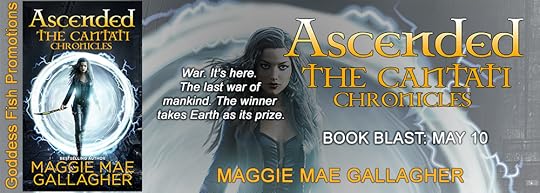
Read about an exciting new novel and enter to win a $25 Amazon gift card below.
Ascended: The Cantati Chronicles
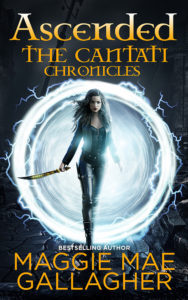 War. It’s here. The last war of mankind. The winner takes Earth as its prize.
War. It’s here. The last war of mankind. The winner takes Earth as its prize.
My name is Alana Devereaux. I am an elite Cantati Forces Lieutenant from Earth’s desolate future. I was sent back through time to save your world. My mission to stop the Mutari faltered. Demons infiltrated our world when the walls between Earth and Infernus fell. Millions died in the first volleys.
The Mutari changed me on an elemental level and my new powers scare the bloody daylights out of me. Formorian Hunters are closing in on my trail with a singular goal, to enact the death warrant placed on my head by their Queen. Now I am running for my life, on a quest to discover a way to kill an immortal on a power trip, stuck between mortal enemies, and everyone else wants me dead.
Excerpt
Choices had consequences. Mine had.
What the hell was I? Human? Cantati? Demon?
I didn’t know. Not anymore. The game board of my life had been upended, and I was still trying to make sense of the scattered pieces.
Until yesterday, I believed I was the last of my kind. A Cantati warrior from the Earth’s desolate future sent eightythree years into the past to stop the Mutari. The Mutari happened every few thousand years. When it did, Earth aligned with six planets in our solar system, creating a seventy-twohour eclipse on Earth. It was also when the walls between the dimensions were at their most vulnerable and could be fully breached. While portals could be opened from time to time, they were marginal in size and couldn’t remain open for extended periods. At least, not long enough to allow an army to march through.
Drystan, lord of the dimension Infernus, had used a tiny amount of my blood. And by tiny, I mean drops that Gaelen’s bastard of a brother, Maddock, had stolen from me. Drystan used it to sever the walls between our worlds and give his armies free rein to invade our planet.
We were lucky. He didn’t have massive amounts of my blood. Which was why the human world’s existence limped on. Otherwise, we’d be hip-deep in Drystan’s demon soldiers. And I’d be dead, so it would be a moot point, for me at least.
Thousands still made it through the breeches before the energy of my lifeblood was exhausted. Which meant I failed my mission. When my father, general and commander of the Cantati Forces worldwide, sent me back through time, using a Moldevian orb and incantation devised by our Coven, my objective was to stop Drystan and keep the human race from fading into extinction.
About the Author
 Born in St. Louis, Missouri, Maggie grew up listening to Cardinals baseball and reading anything she could get her hands on. She remembers her mother saying if only she would read the right type of books instead binging her way through the romance aisles at the bookstore, she’d have been a doctor. While Maggie never did get that doctorate, she graduated cum laude from the University of Missouri-St. Louis with an M.A. in History.
Born in St. Louis, Missouri, Maggie grew up listening to Cardinals baseball and reading anything she could get her hands on. She remembers her mother saying if only she would read the right type of books instead binging her way through the romance aisles at the bookstore, she’d have been a doctor. While Maggie never did get that doctorate, she graduated cum laude from the University of Missouri-St. Louis with an M.A. in History.
Maggie is a bestselling and award-winning author published in multiple fiction genres. She also writes erotic romance under the name Anya Summers. A total geek at her core, when she is not writing, she adores attending the latest comic con or spending time with her family. She currently lives in the Midwest with her two furry felines.
Visit her website here: www.maggiemaegallagher.com
Visit her on social media here:
Facebook: FB.me/MagMaeGallagher
Twitter: @magmaegallagher
BN: http://www.barnesandnoble.com/w/ascended-maggie-mae-gallagher/1126134540
Amazon: https://www.amazon.com/Ascended-Cantati-Chronicles-Maggie-Gallagher/dp/0991481747/ref=sr_1_fkmr0_1
Don’t miss these exciting titles by Maggie Mae Gallagher!
The Mystic Series
REMEMBER ME
CASKET GIRL
The Cantati Chronicles
RUPTURED
ANOINTED
ASCENDED
And if you like your romance with a bit of spice and kink be sure to check out Maggie Mae Gallagher writing as Anya Summers!
The Dungeon Fantasy Club Series
HER HIGHLAND MASTER, Book 1
TO MASTER AND DEFEND, Book 2
TWO DOMS FOR KARA, Book 3
HIS DRIVEN DOMME, Book 4
HER COUNTRY MASTER, Book 5
LOVE ME, MASTER ME, Book 6
SUBMIT TO ME, Book 7
HER WIRED DOM, Book 8
Maggie Mae will be awarding a $25 Amazon or B/N GC to a randomly drawn winner via rafflecopter during the tour.
a Rafflecopter giveaway
May 9, 2017
Favorite Character Tuesday: Harry Dresden
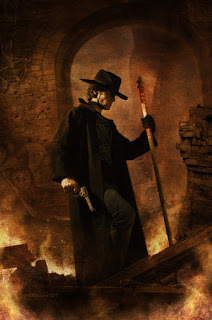
My favorite character of all time is probably Harry Dresden from Jim Butcher’s fantasy series, The Dresden Files. Harry has everything needed for a great character. A great character needs to be someone you think could truly exist. Harry Dresden is definitely someone you can relate to and imagine knowing and liking. In the first book in the series, Harry is a rather unsuccessful wizard for hire. He spends most the time in his office reading paperback novels. But he grows and changes throughout the series. By the twelfth book in the series, Changes, to save his daughter, he becomes the Winter Knight working for Mab, the Queen of Air and Darkness. He tries to commit suicide to get out of this arrangement because he fear becoming corrupted. As the series continues, we see him fight against this corruption. The series is now fifteen books long, and he hasn’t grown the least bit stale like some characters in due in long series. I wait impatiently for each new installment in the series and devour them once I have my hands on them. He practices cool magic, and he’s very good at it, but it doesn’t always get him out of a jam. Sometimes he needs to use other resources or be rescued by others. Sometimes he simply fails, as all of us do at times. He tries to do the right thing, but like all real people, he is flawed. He sometimes makes serious mistakes. It can tell him awhile to realize 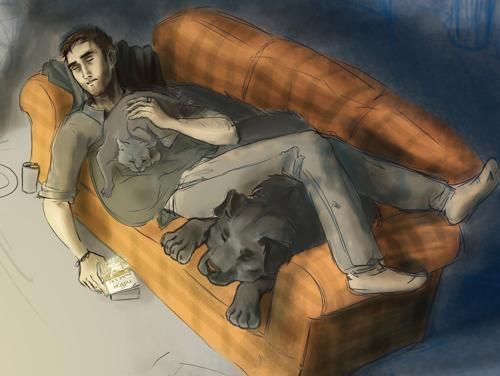 what he’s done wrong, and those realization can be devastating. He fights authority and hates bullies. He has a sarcastic sense of humor, and it can get him into trouble at times. He is a great friend to have. And most importantly, he owns a cat. How can you not love a cat lover? If you haven’t read any of the Dresden Files, you are missing out on some great reads. The Amazon link to the first book in the series is below to get you started. If you’ve read these books, leave a comment on your opinion of Harry Dresden.
what he’s done wrong, and those realization can be devastating. He fights authority and hates bullies. He has a sarcastic sense of humor, and it can get him into trouble at times. He is a great friend to have. And most importantly, he owns a cat. How can you not love a cat lover? If you haven’t read any of the Dresden Files, you are missing out on some great reads. The Amazon link to the first book in the series is below to get you started. If you’ve read these books, leave a comment on your opinion of Harry Dresden.
Maid of Ice Cover Reveal


MAID OF ICE
by Shona Husk
Pub. Date: 11/21/2017
Genre: Paranormal Romance

Stalkers and death threats . . .
For Finlay Ryder, danger means playing a racecar driver on a daytime
soap. That is, until he’s forced to reckon with his true identity
as an Albah, a magical ancient race, by one of his own kind. Someone
wants him dead. And worse, an ancient vampire is on the prowl,
drawing blood left and right. Now, Finlay has no choice but to hunt
enemies with unspeakable powers—or risk being hunted himself…
… and that’s just the first date
Ice skater Alina Nyx is using her broken wrist as an excuse for a career
change. And when she falls for handsome Finlay, Albah drama feels
like her new full-time job. Learning about magic and vampires is
exciting, until her life is threatened. Now, as she begins to uncover
her own mysterious powers, she must combine forces with Finlay to
eradicate their foes for good, or all Albah will suffer…
Amazonm* Apple * GooglePlay * Kobo * Nook


Shona Husk lives in Western Australia at the edge of the Indian Ocean. Blessed with a
lively imagination she spent most of her childhood making up stories.
As an adult she discovered romance novels and hasn’t looked back.
With over forty published stories, ranging from sensual to scorching,
she writes contemporary, paranormal, fantasy, and sci-fi romance.
Website * Twitter * Facebook
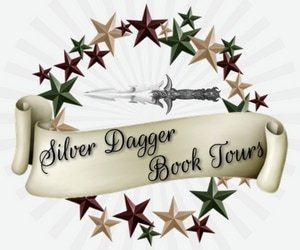
May 8, 2017
Litha, the Summer Solstice
Being about half a Celt (Irish, Scottish, and Welsh ancestry), I’ve always been fascinated by Celtic culture and the druids; a religion based in nature is badly needed in our modern world. (The druid practice of human sacrifice is greatly debated by scholars. Many believe they only resorted to it when they came under extreme threat from the Saxon invasion.) Because of my fascination with the Celts, in my Kronciles of Korthlundia series, I looked to ancient Celtic traditions for inspiration. While I changed and adapted them for my purposes and by no means claim to have remained faithful to ancient tradition or their modern pagan adaptions, all the holidays in Korthlundia have a Celtic origin. Korthlundia has four major holidays throughout the year–Litha, Mabon, Solstice, and Ostara. Today, I start a series of posts dedicated to explaining how holidays are celebrated in Korthlundia, starting with Litha. To learn more about how the ancient Celts or modern pagans celebrate these holidays, this is a good site: Celtic Holidays.
Litha
 Litha is the summer solstice, a time to celebrate the fruitfulness of the earth. The people from nobles to peasant get together in groups to gather flowers, greenery, and wild herbs. They use them to decorate everything from the shrines, the palace, shops, their homes, and even themselves. The night is spent in dancing. They attend the temple or shrines “celebrate her [the goddess’s] blessings, purify our hearts, and express our faith in the promise of the harvest to come.” They are cleansed with the water of new life and partake of the first fruits of summer. In the capital of Murtaghan the festival is even more majestic with flowers decorating the streets and even baked into the pastries. Vendors and street performers fill the streets, and at midday everyone gathers in the city square where the crown princess blesses the community garden as “a sign of [the goddess’s] blessings upon this land and this people.” The night is spent in dancing.
Litha is the summer solstice, a time to celebrate the fruitfulness of the earth. The people from nobles to peasant get together in groups to gather flowers, greenery, and wild herbs. They use them to decorate everything from the shrines, the palace, shops, their homes, and even themselves. The night is spent in dancing. They attend the temple or shrines “celebrate her [the goddess’s] blessings, purify our hearts, and express our faith in the promise of the harvest to come.” They are cleansed with the water of new life and partake of the first fruits of summer. In the capital of Murtaghan the festival is even more majestic with flowers decorating the streets and even baked into the pastries. Vendors and street performers fill the streets, and at midday everyone gathers in the city square where the crown princess blesses the community garden as “a sign of [the goddess’s] blessings upon this land and this people.” The night is spent in dancing.

May 5, 2017
Writing Tips: 4 Rules of World Building
One thing readers of fantasy look for is a journey to a magical world that is unlike the mundane world we all inhabit, so building that world is one of the most important tasks of a fantasy writer and also one of the most fun. There are two basic types of world builders, sometimes called architects and gardeners.
Architects
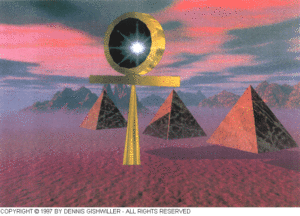 Before they even begin to write the story, an architect takes days, weeks, months outlining every intricate detail of their world from economics to politics to magic. They will create whole notebooks full of climate data, geography, types of inhabitants, religious systems, and even holidays. There are two basic dangers to this type of world building. The first is using it as an excuse to delay beginning the actual story. It can become a distraction/procrastination tactic to combat a writer’s anxiety about whether or not they are truly good enough to be a writer. (An anxiety nearly all writers share.) So a writer needs to know when to stop world building and start writing. The second danger is to use every detail imagined within the novel itself. You spent time creating it, so you need to share it, right? Wrong. The writer will always know more about the world that actually appears in the story itself. As an author, you only reveal as much of your world as the reader needs to know. The details of the world should emerge gradually as they are needed for plot and character development, not be dumped on the reader because the writer created a cool aspect of their world that doesn’t matter to the story itself.
Before they even begin to write the story, an architect takes days, weeks, months outlining every intricate detail of their world from economics to politics to magic. They will create whole notebooks full of climate data, geography, types of inhabitants, religious systems, and even holidays. There are two basic dangers to this type of world building. The first is using it as an excuse to delay beginning the actual story. It can become a distraction/procrastination tactic to combat a writer’s anxiety about whether or not they are truly good enough to be a writer. (An anxiety nearly all writers share.) So a writer needs to know when to stop world building and start writing. The second danger is to use every detail imagined within the novel itself. You spent time creating it, so you need to share it, right? Wrong. The writer will always know more about the world that actually appears in the story itself. As an author, you only reveal as much of your world as the reader needs to know. The details of the world should emerge gradually as they are needed for plot and character development, not be dumped on the reader because the writer created a cool aspect of their world that doesn’t matter to the story itself.
Gardeners
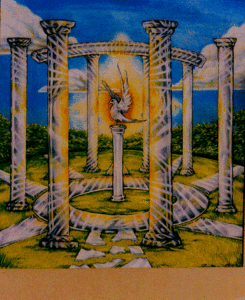 The second type of world builder is often called a gardener. A gardener will have the seeds or the very basics of their world in mind and allow that world to grow as they write the story. They don’t know everything about their world when they begin, but allow it to emerge as the story needs it. This type of world builder also faces potential problems. The first is a shallow or insufficient developed world with too many aspects of it unexplored. A shallow world will not satisfy the reader. The second problem is continuity errors. The author may claim one thing about the religion on page 5 that is contradicted by the scene on page 94 that doesn’t mesh with what they bring out on page 296.
The second type of world builder is often called a gardener. A gardener will have the seeds or the very basics of their world in mind and allow that world to grow as they write the story. They don’t know everything about their world when they begin, but allow it to emerge as the story needs it. This type of world builder also faces potential problems. The first is a shallow or insufficient developed world with too many aspects of it unexplored. A shallow world will not satisfy the reader. The second problem is continuity errors. The author may claim one thing about the religion on page 5 that is contradicted by the scene on page 94 that doesn’t mesh with what they bring out on page 296.
Either method can work and work beautifully as long as the author is aware of the dangers and guards against them. The problems of both methods will be inevitable in the first draft and is one of the many tasks that will need to be addressed in revision.
Suspension of Disbelief
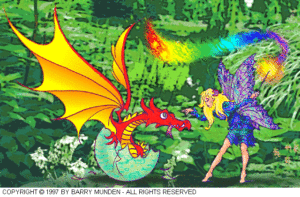 Some people believe that since they are creating something that doesn’t exist, they can do anything they want with it. This is true only to an extent. When you are creating a new world, you are asking your readers to suspend their disbelief for the length of the story. The reader knows that dragons and magic don’t exist, but during the time they are emerged in your story, they should be willing to pretend they do. In creating a suspension of disbelief, the author will find the reader a willing accomplice. Fantasy readers come to a fantasy novel with an absolute willingness to loose themselves in a make-believe world. If they didn’t want to temporarily believe in unicorns and fairies, they would have chosen a different genre. But the reader will turn against the author if the author doesn’t create a believable world, and once a reader loses their suspension of disbelief, it is almost impossible to get back. They probably won’t finish the current novel, and they certainly won’t read another by the same author.
Some people believe that since they are creating something that doesn’t exist, they can do anything they want with it. This is true only to an extent. When you are creating a new world, you are asking your readers to suspend their disbelief for the length of the story. The reader knows that dragons and magic don’t exist, but during the time they are emerged in your story, they should be willing to pretend they do. In creating a suspension of disbelief, the author will find the reader a willing accomplice. Fantasy readers come to a fantasy novel with an absolute willingness to loose themselves in a make-believe world. If they didn’t want to temporarily believe in unicorns and fairies, they would have chosen a different genre. But the reader will turn against the author if the author doesn’t create a believable world, and once a reader loses their suspension of disbelief, it is almost impossible to get back. They probably won’t finish the current novel, and they certainly won’t read another by the same author.
4 Rules of World Building
So how does an author keep the readers’ suspension of disbelief? The following 4 rules lay that out. (Note: The only unbreakable rule of writing is, does it work? However, if these rules are followed, it will work most of the time.)
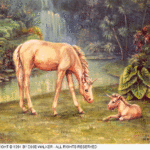 Rule #1:
Rule #1:Your world needs consistent rules. Unicorns can’t be drawn only to virgins at one point in the story and then come to your non-virgin main character at the moment she has need of a unicorn. Dragons can’t need 100 lbs of meat a day, but exist in a desert without much life. Fantasy doesn’t mean illogical. Readers will readily believe something that they know not to be true, but they will balk at anything that insults their sense of logic.
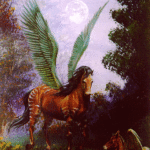 Rule #2:
Rule #2:Anything in your world that also exists in the real world either needs to be consistent with what the reader knows of reality or have an explanation for why it isn’t. So if you’re including such aspects that you have little experience with, you need to research them. One glaring examples of this problem are horses. Horses are a staple of epic fantasy, but few in the modern world have had much interaction with horses. They aren’t like cars with legs, which you can ride all day with only brief stops to load them with fuel and simply park and forget about at night. They are living beings that need a lot of care and have restrictions on their physical strength and endurance. If you are going to include horses in your world, make sure you understand horses.
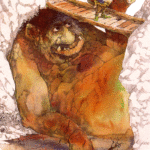 Rule #3:
Rule #3:Include diverse people. No group of people (or elves, fairies, or dwarfs) is all good or all bad. If you have a large enough group, you will some assholes in the mix, some truly caring and good people, and a whole lot of people with varying degrees of assholeness and niceness. Nor will they all think, believe, or act the same way. You may decide in your world that dwarfs are obsessed with mining gold and gems, but if your novel has a large enough sample of dwarfs, there should be some who prefer to play the lute or carve pictures into the rock walls of the caves. A society of only knights and nobles also couldn’t exist. It would also need farmers and artisans.
Rule #4:
Your world needs to be structured in such a way that it addresses real world realities, such as food, clothing, shelter. If a society is to exist, human needs must be met. If they aren’t, society is unstable and won’t last long.
What’s your favorite fantasy world? Please tell us in the comments below.



